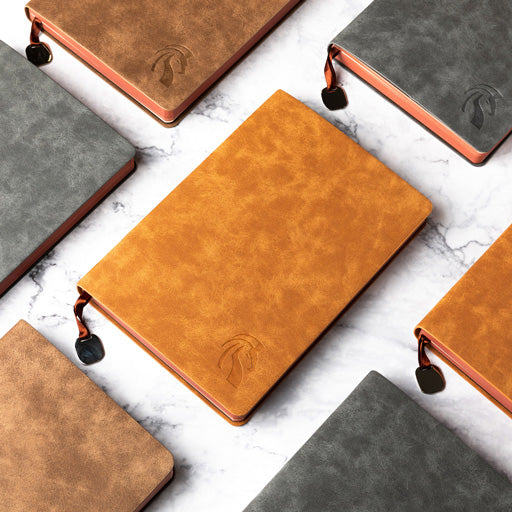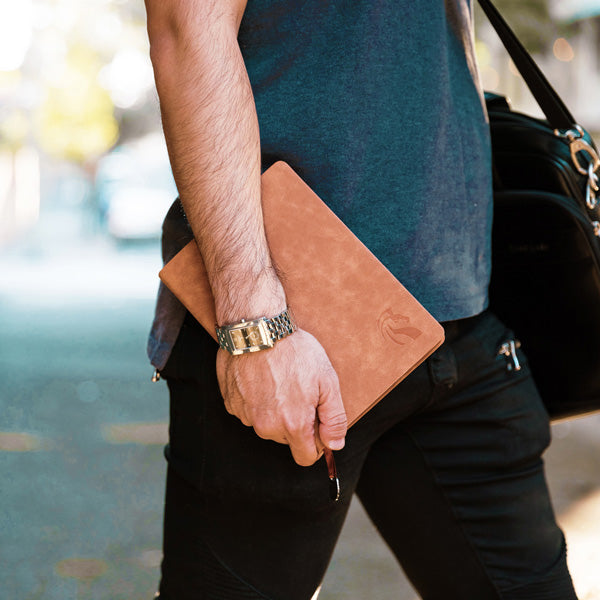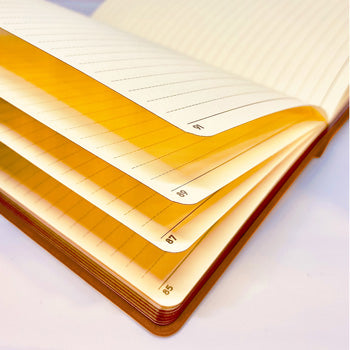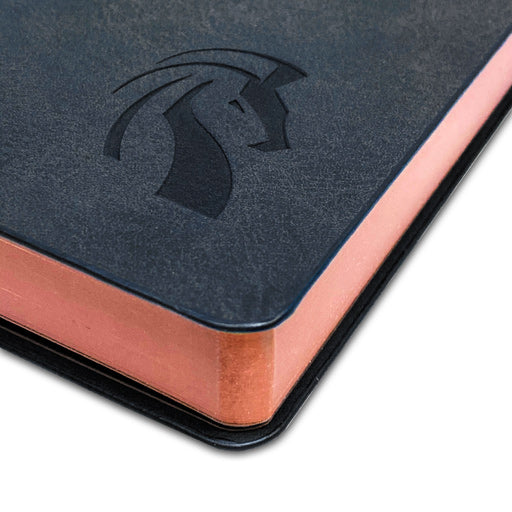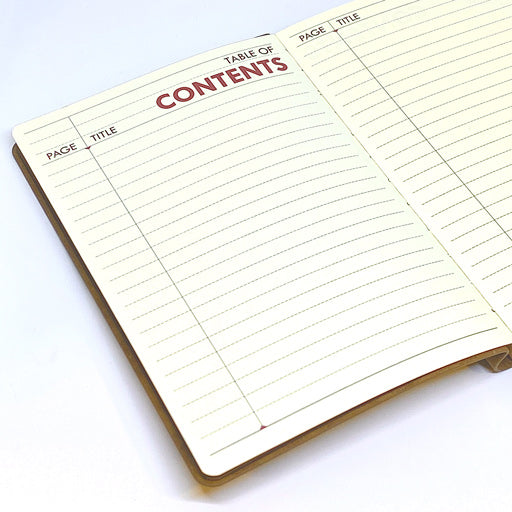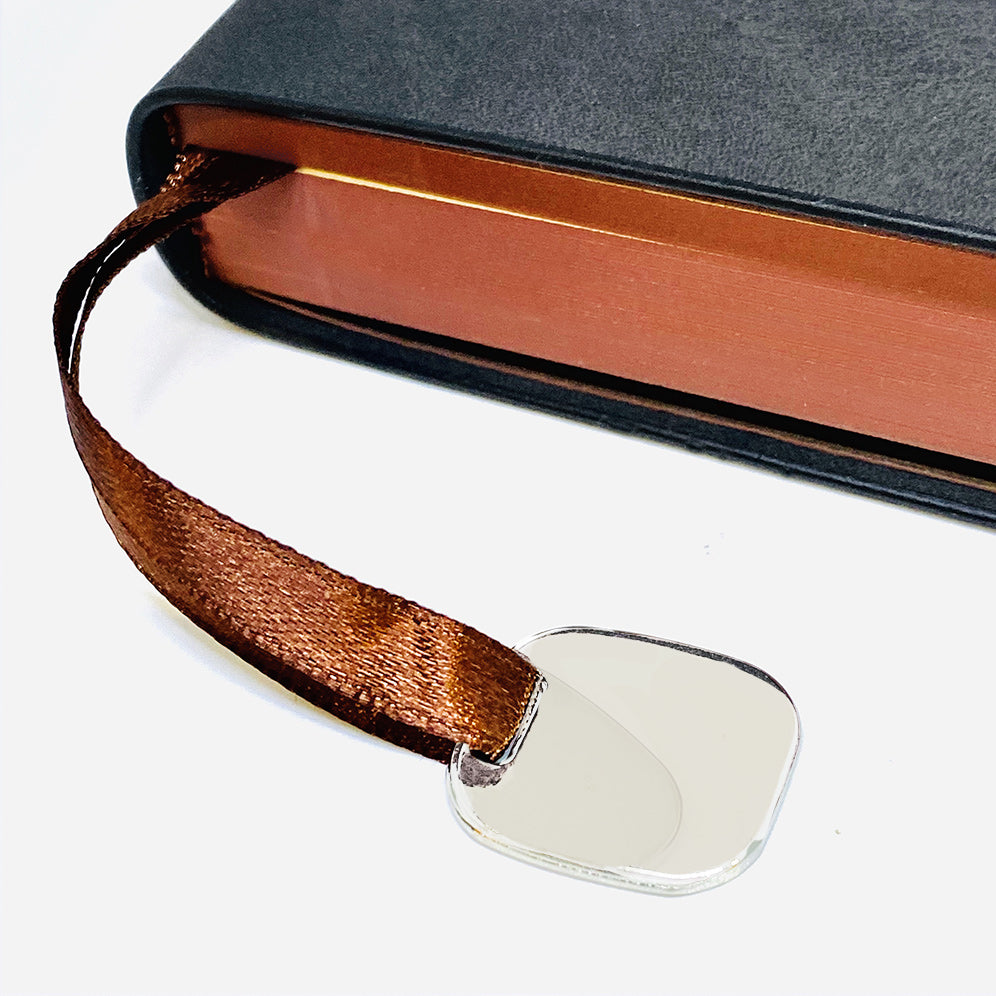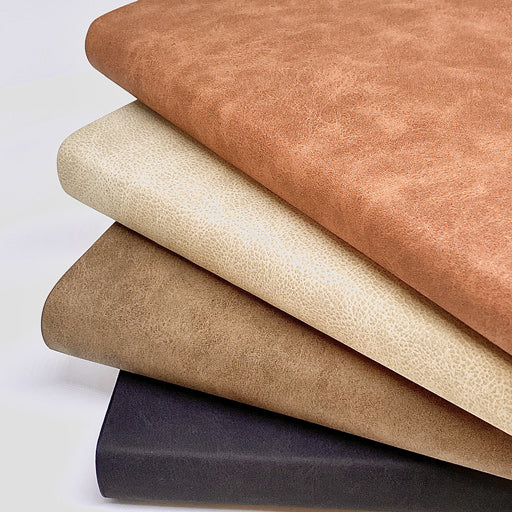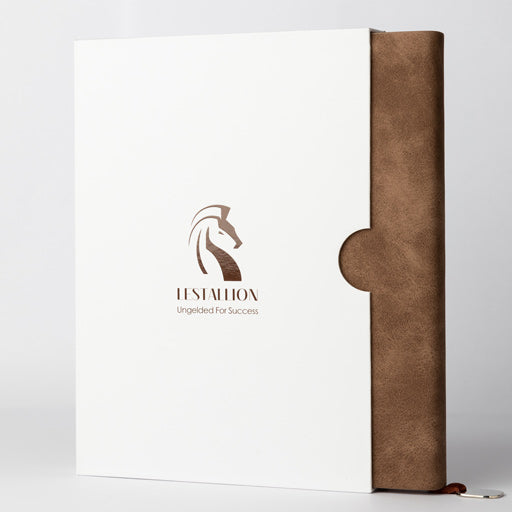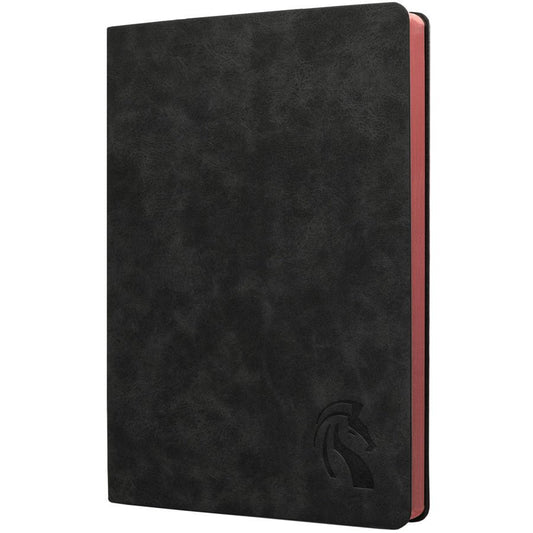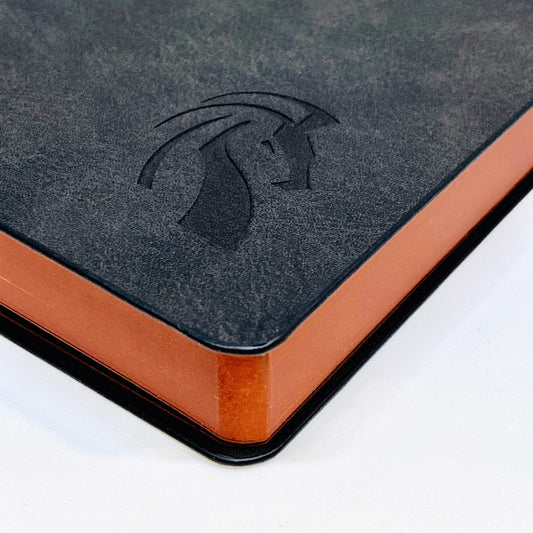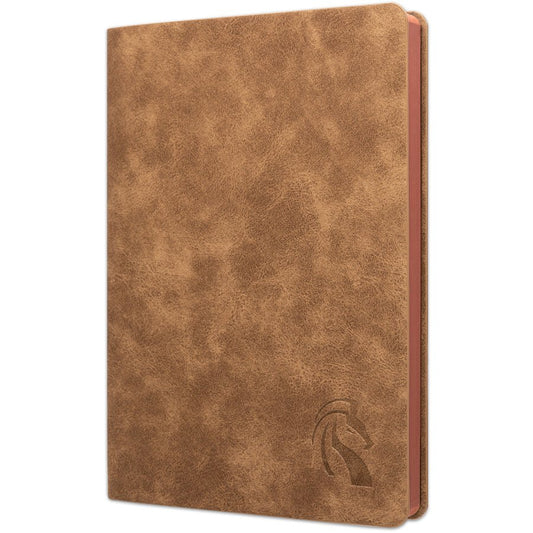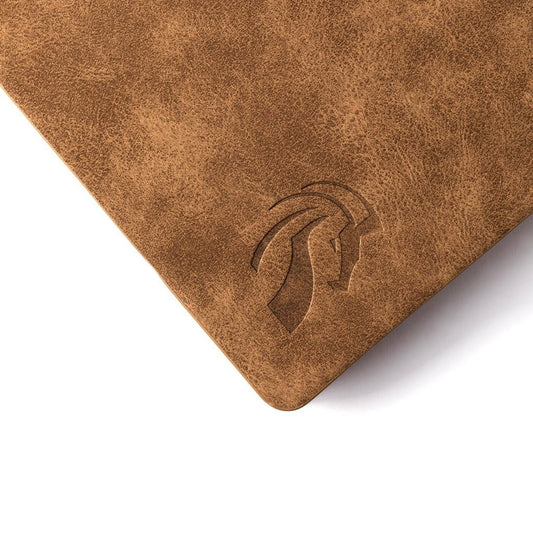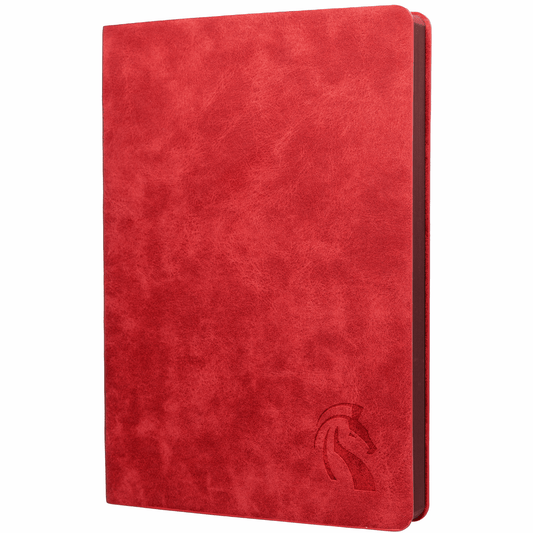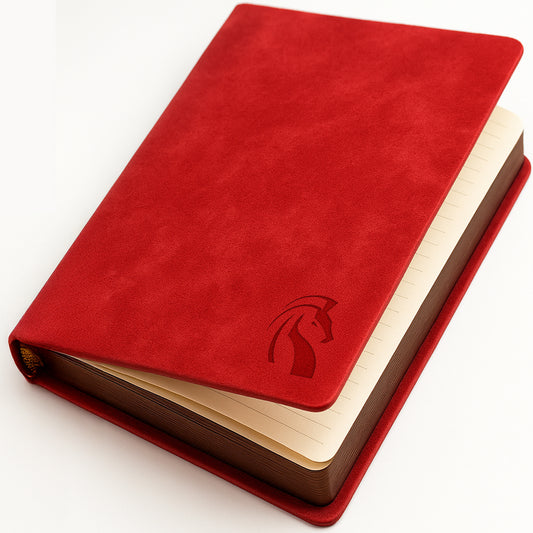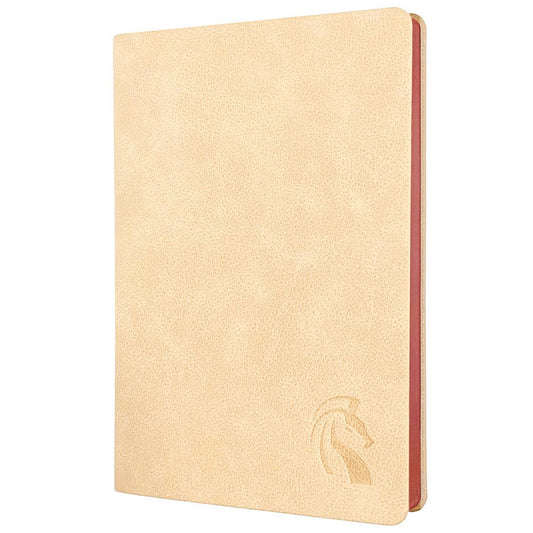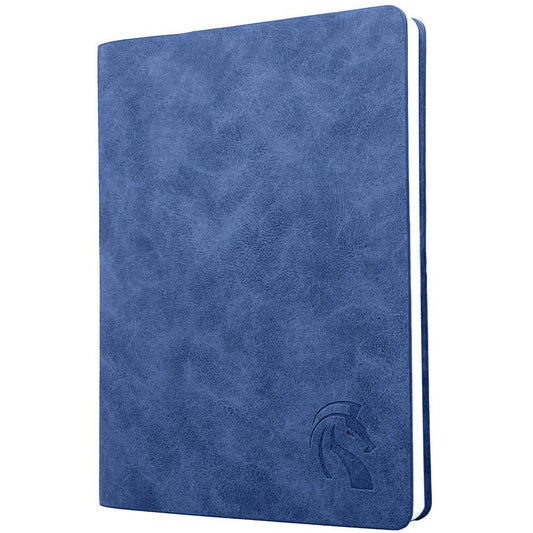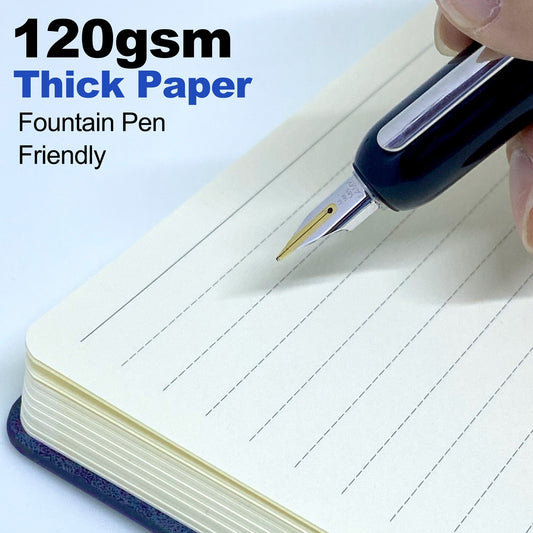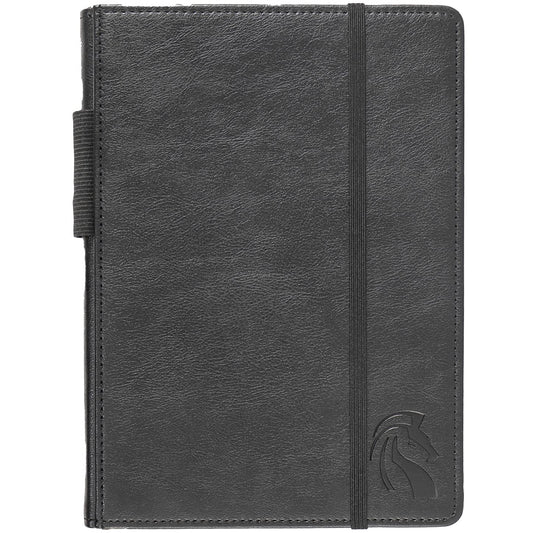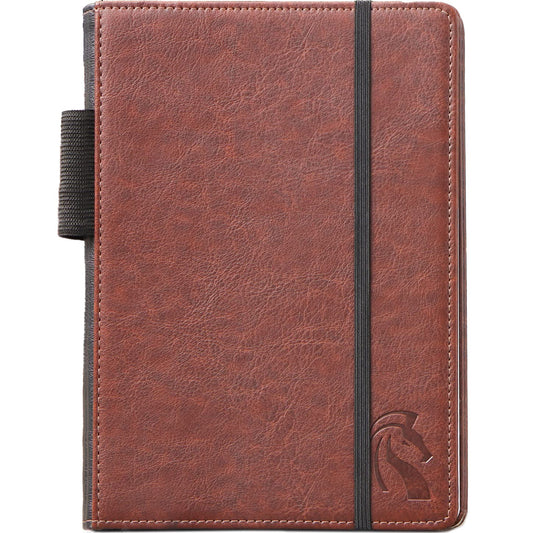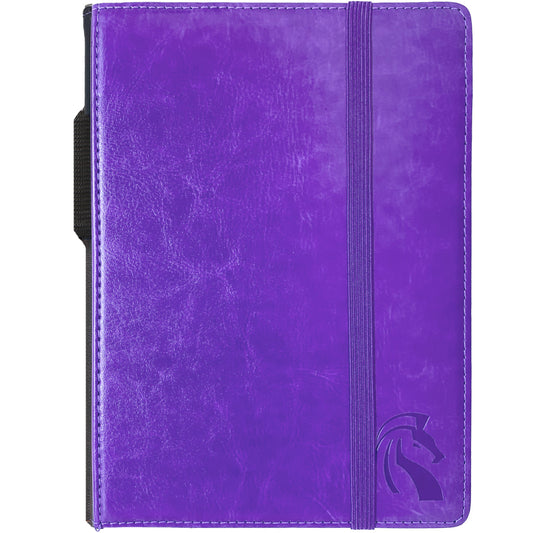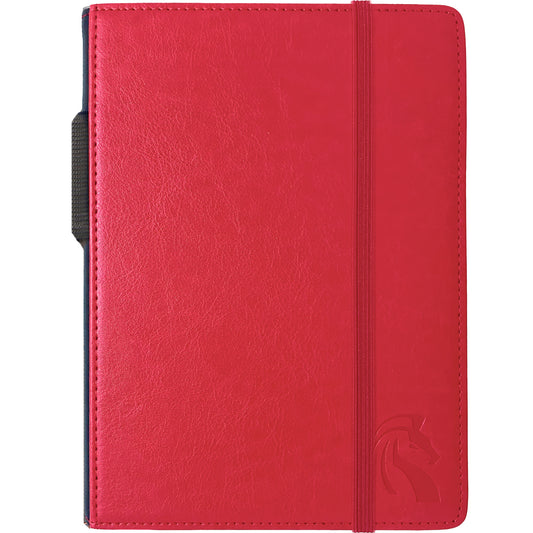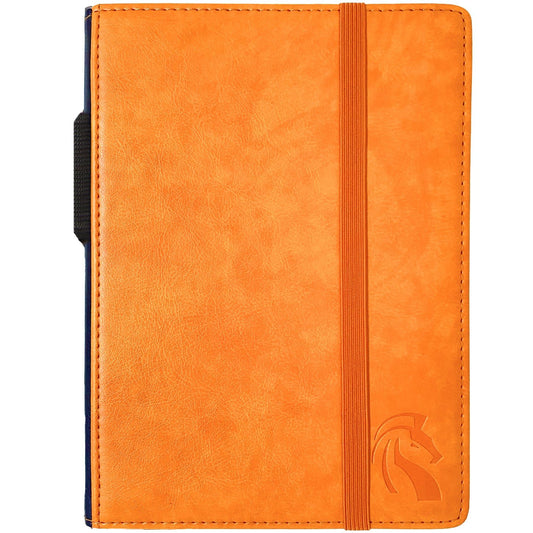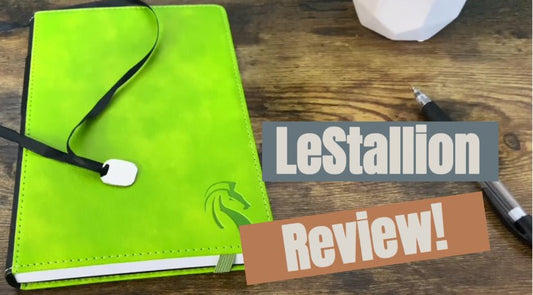In a world increasingly dominated by digital screens, the act of putting pen to paper remains a timeless and meaningful practice. Whether you’re crafting a novel, jotting down morning thoughts, or planning your day, the right writing notebook can elevate the entire experience. For pen enthusiasts, the interplay between a quality notebook and a fountain pen transforms ordinary writing into a celebration of creativity and thoughtfulness.
This guide explores everything from journaling routines and notebook designs to the importance of paper quality and binding types. Whether you're a fan of bullet journaling or searching for the perfect fountain pen-friendly notebook, this article will help you find the ideal companion for your writing journey.
Why Writing Notebooks and Journals Matter
Benefits of Using Writing Notebooks
A writing notebook is more than a tool; it’s a sanctuary for your ideas, emotions, and dreams. Journaling practices like expressive writing and gratitude journals can promote mindfulness, improve mental health, and even help manage anxiety. Each journal entry serves as a safe space where your thoughts and feelings take form, turning blank pages into a chronicle of your inner world.
For students and professionals, writing notebooks can support productivity and clarity. Whether it’s brainstorming ideas, organizing to-do lists, or reflecting on daily habits, the best writing tools create a seamless connection between mind and paper.
The Power of Handwritten Memories
The physical act of writing fosters a deeper connection to your thoughts compared to typing. Journal writers often describe the process as therapeutic, where the tactile sensation of pen on paper enhances creativity and focus. A hardcover notebook with high-quality paper offers an inviting space for recording handwritten memories, ensuring your words feel important and cherished.
Choosing the Right Writing Notebook
Key Features to Look For
Selecting the perfect writing notebook involves considering several factors that influence your overall writing experience:
- Paper Quality: For fountain pen users, high-quality, thicker paper like 120 gsm or Tomoe River Paper is essential to prevent ink ghosting, bleeding, and excessive dry times.
- Binding and Covers: A durable hardbound or leather journal offers longevity, while softbound notebooks provide flexibility. Spiral-bound notebooks are ideal for ease of use, especially for bullet journaling.
- Page Layouts: Consider options like dot grid, ruled, or blank pages based on your needs for writing, drawing, or note-taking.
- Size and Portability: Compact pocket notebooks are great for jotting down quick thoughts, while larger A5 notebooks offer more room for detailed work.
Notebook Types for Different Needs
- Journaling Notebooks: Ideal for personal reflection, morning pages, and creating a gratitude journal.
- Creative Writing Notebooks: Designed for novel writing, poetry, or drafting essays, these often feature acid-free paper for long-term preservation.
- Student Writing Notebooks: Perfect for to-do lists, academic notes, and planning, with features like page numbers and grid layouts.
- Business Notebooks: Tailored for professionals, these emphasize functionality with hard covers and minimalist designs.
The Role of Paper Quality in Writing
Why Paper Quality Matters
The quality of paper dramatically impacts the performance of your writing instruments. Using fountain pens, ballpoint pens, or pencils on low-quality paper can lead to frustration due to ink bleeding, ghosting, or an unsatisfying paper texture. High-quality papers like Tomoe River or 120 gsm wood-free paper enhance your writing experience, ensuring smooth pen strokes and vibrant pen ink performance.
Popular Paper Choices for Notebooks
- Tomoe River Paper: Renowned among pen enthusiasts for its exceptional performance with fountain pens and inks.
- 120 gsm Paper: Offers durability and resistance to ink ghosting, making it ideal for creative writing and journaling habits.
- 100 gsm Paper: A lightweight yet reliable option for students writing or creating bullet journals.
- Wood-Free Paper: A sustainable choice that reduces environmental impact while providing excellent writing quality.
Matching Paper to Your Writing Style
Different paper types cater to varying needs:
- Thick paper for those who prefer pen art or watercolor designs.
- Toothy paper for users who enjoy a tactile penmanship experience.
- Smooth papers for effortless pen writing with minimal resistance.
Designing Your Ideal Writing Notebook
Thoughtful Design Elements
A well-designed writing notebook enhances both form and function. Pay attention to the following design features when selecting a notebook:
- Cover Options: Choose between leather or faux leather for a classic look, or opt for hard covers and soft covers based on your preferences.
- Binding Styles: Spiral-bound notebooks provide flexibility, while hardbound and softbound notebooks offer durability and aesthetic appeal.
- Layouts and Pages: Options like dot grids, ruled lines, or blank pages allow for creative customization, whether for bullet journaling, drawings, or traditional writing.
- Page Numbers and Sections: Ideal for keeping organized, particularly in business journal notebooks or study notebooks.
Aesthetic Appeal for Creativity
For many writers, a notebook isn’t just a tool; it’s an extension of their personality. Features like unique colors, design elements, and textures can transform a simple notebook into an inspiring canvas for creativity. Notebooks like the Leuchtturm1917 or Moleskine excel at combining functionality with aesthetic beauty.
Notebooks for Specific Writing Needs
The Best Notebook for Every Purpose
Depending on your needs, different notebooks cater to specific writing experiences:
- Novel Writing: Look for notebooks with wide pages and durable covers, such as the Galen Leather Notebook or TWSBI Eco Fountain-compatible options.
- Poetry and Creative Writing: Opt for acid-free paper and smooth textures to capture your flow of ideas effortlessly.
- Bullet Journaling: Notebooks with dot grid layouts, like Ryder Carroll’s Bullet Journal, are excellent for habit tracking and goal setting.
- Business and Professional Use: Choose notebooks with hard covers and minimalistic designs for a polished look, ideal for meetings and daily planning.
Top Choices for Pen Enthusiasts
For pen enthusiasts, the right notebook must accommodate fountain pens, ballpoint pens, and other writing instruments. Here are some recommendations:
- Tomoe River Paper Notebooks: Highly praised for their resistance to ink bleeding and ghosting.
- Pilot Metropolitan Notebooks: Known for their smooth pen-friendly paper and great compatibility with pen collections.
- Softcover Journals: Lightweight and portable, perfect for everyday journaling practices.
Enhancing the Writing Experience
Tips for Pen and Notebook Pairing
To achieve a seamless writing experience, pair the right pen with the right notebook:
- Use fountain pens with thick paper to prevent ink ghosting and excess ink smudging.
- Choose nib sizes based on your writing style; fine nibs for detailed work and broader nibs for bold strokes.
- Incorporate blotting paper when working with wet inks to manage dry times effectively.
Maintaining a Journaling Routine
A consistent journaling routine can bring structure and mindfulness to your day. Here’s how to stay motivated:
- Dedicate a specific time for journaling each day, like in the morning for gratitude journals or before bed for reflections.
- Keep your notebook accessible in a desk drawer or carry a pocket notebook for spontaneous entries.
- Experiment with bullet journaling layouts or prompts to keep the habit fresh and engaging.
Exploring Paper Quality and Texture
The type of paper in your notebook significantly impacts the way you write and how your chosen pen interacts with the surface. For those who use fountain pens, the importance of high-quality paper cannot be overstated. Tomoe River paper, for instance, is a favorite among pen enthusiasts for its smooth texture and exceptional performance with fountain pen inks. It minimizes ink ghosting and bleeding, allowing for crisp and clear handwriting, even with wet inks or larger nib sizes.
Thicker paper options, like 120 gsm or 100 gsm, offer a luxurious writing experience while accommodating a variety of pen types, including ballpoint pens and gel pens. These papers are ideal for creative writing, poetry, or journaling, as they allow for clean, precise strokes without compromising the durability of the notebook. In contrast, traditional wood-free paper provides an eco-friendly alternative with excellent pen performance, making it perfect for students or professionals who value sustainability.
Texture also plays a crucial role in how your handwriting feels on the page. Smooth paper surfaces are preferred for fluid and effortless pen strokes, while toothy paper offers a tactile feedback that many writers find satisfying. Matching your paper choice to your personal preferences and writing habits can enhance your overall writing experience, turning a simple task into a meditative practice.
The Best Notebooks for Different Writing Styles
Every writer has unique needs, and the right notebook can complement their specific style. For novelists, notebooks with wide, expansive pages and sturdy hardbound covers are essential for capturing long-form ideas and intricate plots. A popular choice is the Galen Leather notebook, which combines durability with a touch of elegance, making it an excellent companion for long writing sessions. Another favorite is the TWSBI Eco-compatible notebook, designed specifically for fountain pen users who value paper quality above all else.
Poets, on the other hand, may prefer smaller, more portable notebooks that allow them to jot down verses as inspiration strikes. Softcover options with smooth, acid-free paper ensure that the words flow effortlessly, preserving the artistry of the written word. Similarly, artists and creators often turn to notebooks that cater to mixed media, with thicker paper to accommodate pen art, watercolor, and drawings.
Bullet journaling has become a popular trend for organizing thoughts and tasks, and notebooks with dot grid layouts are a staple for this practice. These layouts offer flexibility, enabling users to create everything from habit trackers to elaborate to-do lists. Ryder Carroll’s Bullet Journal is a classic choice, offering a clean design and features that support productivity while encouraging creativity.
For professionals and students, functionality takes precedence. Business journal notebooks with hard covers and minimalist designs project a polished look while ensuring durability. Students often favor spiral-bound notebooks for their ease of use, with grid or ruled layouts that cater to note-taking and assignments. Pocket notebooks are an excellent addition for quick, on-the-go notes, ensuring that no idea is lost during a busy day.
Enhancing Your Journaling Routine
Developing a consistent journaling practice can be transformative, offering clarity, mindfulness, and personal growth. The act of writing daily—whether in a gratitude journal, creative writing notebook, or a bullet journal—helps you organize your thoughts, reflect on your emotions, and set meaningful goals. A good journaling routine involves choosing a notebook that aligns with your style and preferences, as well as creating an environment that encourages focus.
Morning journaling, often referred to as writing morning pages, is an excellent way to start the day with intention. A journal notebook with smooth paper and a compact size is perfect for capturing thoughts over a cup of coffee. For evening reflections, a hardcover journal notebook with thick pages can handle more elaborate entries, including drawings, diagrams, or expressive writing.
To sustain a habit, keeping your journal accessible is key. Store it in a convenient spot, like a desk drawer or a bedside table, to make journaling part of your daily ritual. Incorporate journaling prompts to keep your entries engaging, such as gratitude lists, reflections on daily accomplishments, or plans for self-improvement. Tools like the Ryder Carroll Bullet Journal or a Leuchtturm1917 notebook provide layouts that inspire creativity while keeping you organized.
Choosing the Right Writing Instruments
The perfect notebook deserves the perfect pen, and selecting the right writing instrument can elevate your entire experience. For those who value precision and elegance, fountain pens are unmatched. Pens like the Pilot Metropolitan or the TWSBI Eco Fountain Pen offer a smooth writing experience, particularly when paired with high-quality paper. The nib size of a fountain pen—ranging from fine to broad—affects the way the ink flows onto the page, allowing you to customize your handwriting style.
If fountain pens aren’t your preference, a classic ballpoint pen or gel pen works wonderfully for quick notes and journal entries. These pens are ideal for bullet journaling, where precise layouts and small details are often required. Many pen users also explore pen art, combining their writing tools with sketches and decorative elements to add personality to their journals.
Ink is just as important as the pen itself. For those using fountain pens, the quality of the ink can influence dry times, color vibrancy, and whether ink ghosting or bleeding occurs. Blotting paper can be a helpful accessory to manage excess ink, ensuring your pages remain clean and crisp. Popular ink brands, such as Pilot, offer a range of colors and finishes that add a creative flair to your entries.
Notebook Design for Functionality and Aesthetic Appeal
The design of your notebook should balance functionality with aesthetic appeal. Hardbound notebooks with durable covers are excellent for long-term use, offering protection for your ideas and memories. On the other hand, softbound notebooks are lightweight and flexible, making them easy to carry during commutes or travels.
The cover material is another consideration. Leather journal notebooks exude sophistication and are perfect for professional settings or personal reflections, while faux leather options provide a similar look at a more affordable price point. For those who value sustainability, wood-free paper notebooks are a responsible choice without compromising quality.
Inside, features like page numbers, dot grid layouts, and pocket inserts enhance the notebook’s usability. For creative individuals, grid layouts or blank pages allow for freedom in design, making them suitable for pen art or mind mapping. For professionals, notebooks with sections and to-do list layouts help streamline productivity.
Maintaining Your Writing Tools and Notebooks
The longevity and performance of your writing tools and notebooks depend on proper care and maintenance. For fountain pens, regular cleaning is essential to prevent clogs and ensure a smooth writing experience. Using compatible inks and avoiding excess ink during refills can extend the life of your pen. A high-quality pen, such as the Pilot Metropolitan or Lamy, paired with blotting paper, ensures your writing remains crisp and clean.
Notebooks, especially those with premium materials like leather covers or hardbound bindings, benefit from careful handling. Store your notebooks in a dry place away from moisture to protect their pages from warping or yellowing over time. If you use notebooks for pen art or watercolor designs, consider investing in archival-safe storage solutions to preserve your creations.
Maintaining a pen collection is also an enjoyable aspect of journaling and writing. Display your pens in a dedicated drawer or case to prevent scratches and damage to the nibs. This thoughtful organization makes it easier to choose the right tool for the task, whether it’s a ballpoint pen for quick notes or a fountain pen for more deliberate writing sessions.
Journaling for Personal Growth and Creativity
Journaling isn’t just a practical habit; it’s a gateway to self-discovery and creative expression. Keeping a journal notebook allows you to explore your thoughts, feelings, and ideas in a private, safe space. Whether you’re tracking habits, managing emotions, or brainstorming new concepts, the act of writing fosters mindfulness and encourages introspection.
For those seeking inspiration, using journal writing prompts can help overcome the intimidation of a blank page. Prompts like “What are three things you’re grateful for today?” or “Describe a recent challenge and how you overcame it” offer starting points for meaningful reflection. Writers often revisit old entries, finding patterns in their thoughts or seeing how much they’ve grown over time.
Creative individuals, such as poets or novelists, can use their journals as a sandbox for new ideas. A creative writing notebook with thick, toothy paper is ideal for drafting poems or sketching story outlines. Artists can integrate pen art or even watercolor drawings, turning their journals into personalized masterpieces.
The Role of Notebooks in the Digital Age
In an era dominated by digital tools, the tactile experience of pen and paper remains unparalleled. Writing by hand engages the brain in ways that typing cannot, improving memory retention and fostering a deeper connection with your ideas. While apps and devices offer convenience, they can’t replicate the intimacy of handwritten journaling practices.
For those who balance the digital and analog worlds, a journal notebook serves as a physical archive of your thoughts, unfiltered and free from distractions. The act of flipping through pages, feeling the texture of wood-free paper, and seeing your handwriting evolve over time creates a sense of accomplishment that digital notes often lack.
In professional settings, analog tools also stand out. A business journal notebook conveys sophistication and professionalism, making it an excellent choice for meetings or brainstorming sessions. Similarly, students writing essays or study notes benefit from the focus that physical notebooks provide, free from the interruptions of notifications.
Conclusion
Finding the perfect writing notebook or journal is an investment in your creativity, productivity, and personal growth. Whether you’re a seasoned writer, an artist, or someone exploring the world of pen journaling for the first time, the right tools can transform your experience. From high-quality Tomoe River paper and fountain-pen-friendly notebooks to durable hardbound journals and aesthetically pleasing softcover options, the variety available ensures that there’s something for everyone.
Your notebook is more than a collection of pages; it’s a reflection of your thoughts, dreams, and ideas. By choosing the right design, maintaining your writing instruments, and cultivating a regular journaling habit, you can create a meaningful practice that enriches your life in countless ways. So take your time, explore your options, and let your next notebook become the canvas for your greatest ideas.
